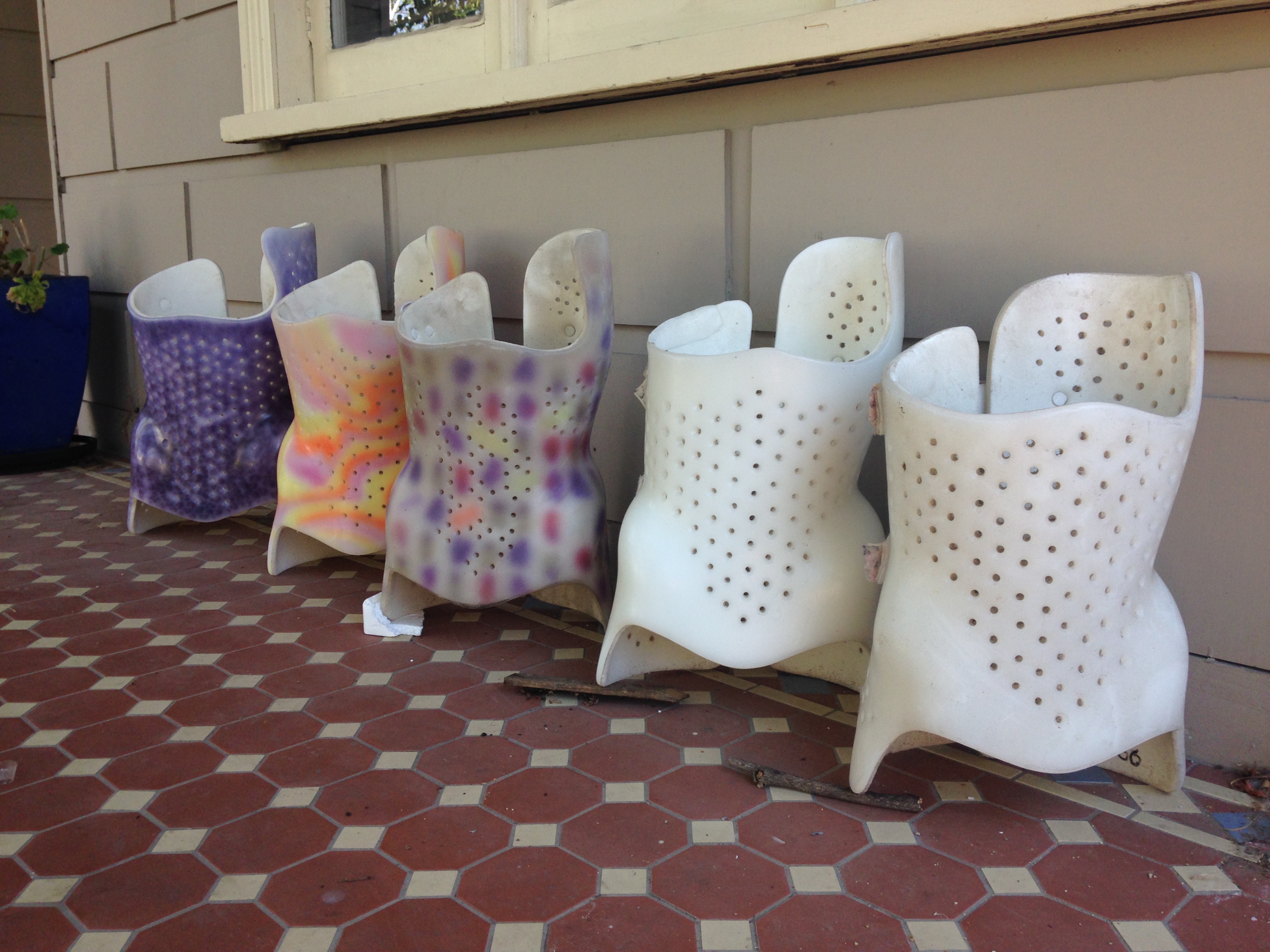It’s hard rubbish week in our patch. Unlike some places I’ve been – one bayside suburb where we picked up skis and a cappuccino machine – most of the stuff on the pavements around our place is, in fact, rubbish. It gets picked over all right, but there’s not much treasure in this trash.
This year we had a more vigorous purge than usual. A brush with decluttering guru Marie Kondo earlier in the year had sent me frantically chucking stuff and the shed – mostly my husband’s domain, has not escaped.
For years now, six bulky white back braces (thick, hard white plastic, fastened with sturdy Velcro) have taken up space in our shed. They were worn by our youngest, a girl, from the ages of 11 to 15. Her father has been threatening to bin these for a long-time; she and I could never quite bear to part with them. Maybe, one day, I thought, she would include them in some sort of art installation, as she had with her first and smallest brace at high school, coating it with gleaming gold paint and displaying it in the annual exhibition.
It was more than the thought of using them in some funky artistic endeavour, however. Every time I got close to throwing them out, I would be taken back in time to the years of her life that were punctuated with visits to the Royal Children’s Hospital.
I have scoliosis, undiagnosed until I was full grown and it was too late to do anything about it. When I’m clothed, my back isn’t obviously misshapen, but all my life I have suffered from neck and head pain, which is part of living with a condition like that. So I checked each of my children vigilantly as they grew, for any signs that they might have inherited the skewed spine that has made its presence felt for almost as long as I can remember. Looking at offspring number four, I realised we hadn’t escaped – her eleven-year old back showed the tell-tale sign of curving in a gentle S.
There followed visits to the orthopaedic specialists at RCH, some months of observation, X-rays, measurements of angles. News was that her curved spine was worsening. A back brace was in order, if not spinal surgery.
The next five years saw us making regular treks to the Children’s, which we were lucky enough to live close to. It was the old hospital, down at heel but plucky, long, grimy corridors, banks of slow lifts, volunteer ladies selling crocheted goods in the foyer. I had worked briefly as a nurse there in the 80s – nothing much had changed.
Orthotics and prosthetics – the department we frequented - was in the basement, down a gloomy subterranean passageway. We spent many hours in the waiting room there, idly watching kids shows on the telly high on the wall, leafing through ancient women’s mags, watching other, younger kids playing with the boxes of broken toys.
‘Jeff’ was the technician who treated our girl, and he was great. Vastly experienced (he had spoken about back braces at international conferences) there wasn’t much he didn’t know about the condition and treatment of scoliosis and he was down to earth, old-school, strict and reassuring.
Every few months there would be a visit to X-ray, then to the orthopaedic registrar to interpret it and tell us (we hoped) that things were improving, then down to ‘Jeff’ before the treat of a Macca’s flurry and the tram ride home.
Every six to nine months she would outgrow her brace and need to be fitted for a new one – a process that involved being stretched on something that looked like a medieval rack, as ‘Jeff’ wrapped her torso in bandages and then covered her with plaster of Paris which set and was then cut off, as the mould for her new brace.
The service in the hospital was wonderful and we never paid a cent. Our daughter’s back will never be straight, but it is much better than it would have been without treatment.
There are memories aplenty attached to those objects that resemble a straight-jacket from a 19th century lunatic asylum. But our girl has moved out long since, and there are limits to how long you can carry around your kids’ stuff, especially when you have four of them.
Looking at them reminded me of so much – of the care at the Royal Children’s, of the conflict we had in the final years of her brace-wearing when she found it extra tough, of the hot summer nights when I felt terrible for insisting that she simply had to wear it, of strapping her in after a shower – the one time, apart from playing sport, when she was allowed to take it off - of her courage over so many years of wearing what must have felt like the hardest corset, like a suit of heavy armour.
So before I throw them out, I line them up, in order of size, and photograph them and ponder health care and privilege and the care of medicos and the stoicism of patients and my strong, straight daughter, now 25 and starting on adulthood. I sigh and place them on our nature strip. Next day, the rest of the rubbish is still there, but the back braces are gone. Maybe we’ll see them in some avant garde art gallery after all.
This was published in The Melbourne Age on 26 May 2019
